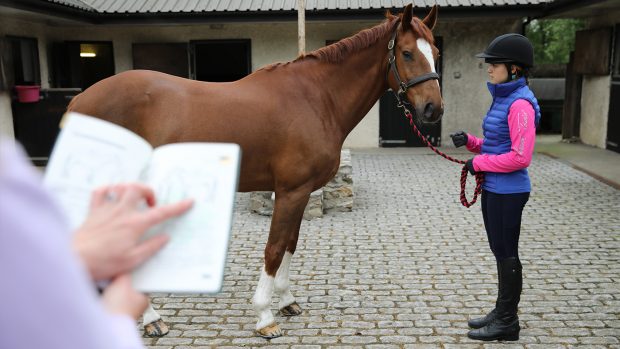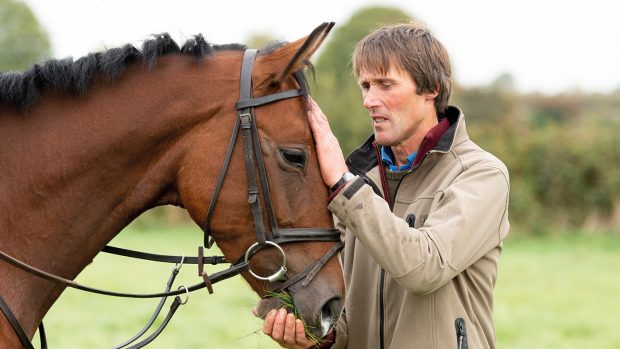Buying your perfect horse can be an exciting yet daunting process. More potential buyers are now venturing further afield in the hunt for their next dream equine with horses for sale in Ireland, Germany and Holland proving to be popular hotspots. What do you need to consider before making that all important purchase abroad?
1. To view or not to view?
You have trawled through adverts; you’ve spoken to a number of dealers; been given recommendations and now you think you may have found the one. But the one is in Holland and you are in the UK. With the help of technology, videos allow us to “view” the potential horse, but can a video really make up for the real thing and is it advisable to buy the horse unseen?
British Dressage list 1 Judge Debby Lush says: “Don’t do it! If the buyer is insistent then I’d advise that they have someone knowledgeable, who knows them and their riding very well, to go over and try it on their behalf. If the person trying it had no idea what the prospective purchaser’s riding is like, it’s probably not going to work”.
“Get on a plane!” agrees CCI4* rider and silver medal-winning Olympian Lucinda Fredericks. “Definitely ride the horse, preferably over two days and away from home. It’s how they ride and their trainability. Take a second pair of knowledgeable eyes with you. I would also trot the horse up and lunge it on a hard surface before I left because that’s a sure way of seeing an overall soundness and is the best telling point if a horse is particularly one-sided. The horse has got to be suitable; if it’s for an amateur the horse has got to look after its rider. I have sent people to go and try a horse, I’ll say I want ‘this’ and if it’s not suitable for me I’ll leave it. It could be a two-star horse but it doesn’t matter.”
And what’s the vet’s perspective?
Graham Hunter (BVM&S, GPCert (EqP), CertEP, CertAVP(ESO), MRCVS and RCVS Advanced Practitioner in Equine Surgery – Orthopaedics) of Ardene House Veterinary Practice advises: “It is always a very good idea to visit, view and ride the horse in person or have a trusted equestrian friend to view the horse for you if at all possible. I am aware that this is not always feasible.
“Videos of the horse at the very least should be viewed ensuring the video is of a high quality in good light. I have seen videos taken outdoors on windy and rainy days where it is impossible to assess how the horse is moving. It is important to take a video that would be the same views as a vet would be looking at i.e. directly away and back in a straight line and on a hard surface in walk and trot. Views should be taken on this same surface from the side in walk and trot. Videos of the horse being lunged should also be taken and videos of the horse being ridden should be taken with an appropriate sized rider of suitable capability.”
2. Now on to the vetting
You’ve made the decision to take the next step towards the purchase of your new horse, but the next hurdle is the pre-purchase examination.
“I very often have the horse x-rayed with a local vet over there and have the x-rays sent to my own vet in England. If they are no good then I won’t carry on,” Lucinda Fredericks explains. “If the x-rays aren’t good enough importantly you can’t insure it, and from a buying and selling point of view then it’s going to be difficult to sell. If you are buying the horse for yourself to keep, then that is slightly different so the clinical vetting would be more important to me.”
Graham states: “It is difficult to select a vet to undertake the vetting examination abroad unless you have direct contacts in the country where the horse is being sold. Ask around; get names of others that purchased from the same vendor. You frequently have to trust the choice of the seller. You can always fly your selected vet from the UK if you desire, which many people will decide to do.
“Some continental vets seem to be more lenient on some gait issues and some x-ray changes than vets in the UK may be. I have seen horses arrive with a clean vetting and x-rays that have clear problems on physical examination or indeed on the x-rays. I have frequently seen horses that have passed a set of radiographs abroad and on resale in the UK subsequently fail for the exact same issues that were previously passed abroad.”
3. What about the insurance?
With numerous horse insurance companies and policies on the market it is important to shop around for the best product for you and your horse. When buying a horse from abroad ensure to contact your insurer before any final purchase as they may require sight of the vetting certificate before the policy can be agreed. You don’t want to find out once your horse is en route that it can’t be insured!
Graham comments: “If you are seeking a horse abroad, the chances are you are looking for more than just a hack or a pony for a bit of fun. It is therefore very advisable to obtain a fresh set of x-rays of the intended horse. It should be noted that for the horse to be insured in the UK and for the x-rays to hold validity with the insurance company, they generally must have been performed in the past 30 days. Old x-rays also may not show new pathology. I have been in situations where we have to take full sets of x-rays again for insurance if old radiographs have been supplied from abroad at the vetting examination.
4. On arrival
You’ve gone through the lengthy process of viewing, vetting and purchasing so what’s next?
Graham tells us: “As it stands at the moment there are no quarantine requirements for horses moving back and forward to Europe. Horses must have a valid passport and accompanying EU export health certificates. The export health certificate is issued after the horse is certified fit to travel. This examination is performed just before departure.
“New horses should ideally be isolated for a minimum of three weeks, ideally with limited shared airspace with other horses. Ensure isolation areas are cared for by separate staff or dealt with after all other horses and have separate equipment and tack. Examples of diseases which are easy to introduce include strangles, ringworm, herpes and influenza virus and rhodococcus infections.”
Continued below…
Like this? You might also enjoy reading these:
Buying or selling a horse: do you know where you stand? *H&H VIP*
Buying a horse? Five vital conformation tips to consider first
Buying a horse: Horse & Hound’s ultimate step-by-step guide
5. When it doesn’t always go to plan
In the horse world, try as we might, but things don’t necessarily always go to plan. Your “dream” horse may arrive, but weeks down the line what do you do when it’s not working out?
Lucinda advises: “When purchasing a horse you must be completely honest, and equally it is the seller’s job also to make sure they are honest enough to say if they know the horse isn’t going to be suitable for you. When it’s not working out very often I’ll be completely honest and say it’s never going to change or suit you and it’s time to move on. The horse will suit somebody else.”
“If it seriously isn’t going to work, there’s no point,” Debby agrees. “Someone else will probably be a better match for the horse rather than persisting with an unsuitable match.”





